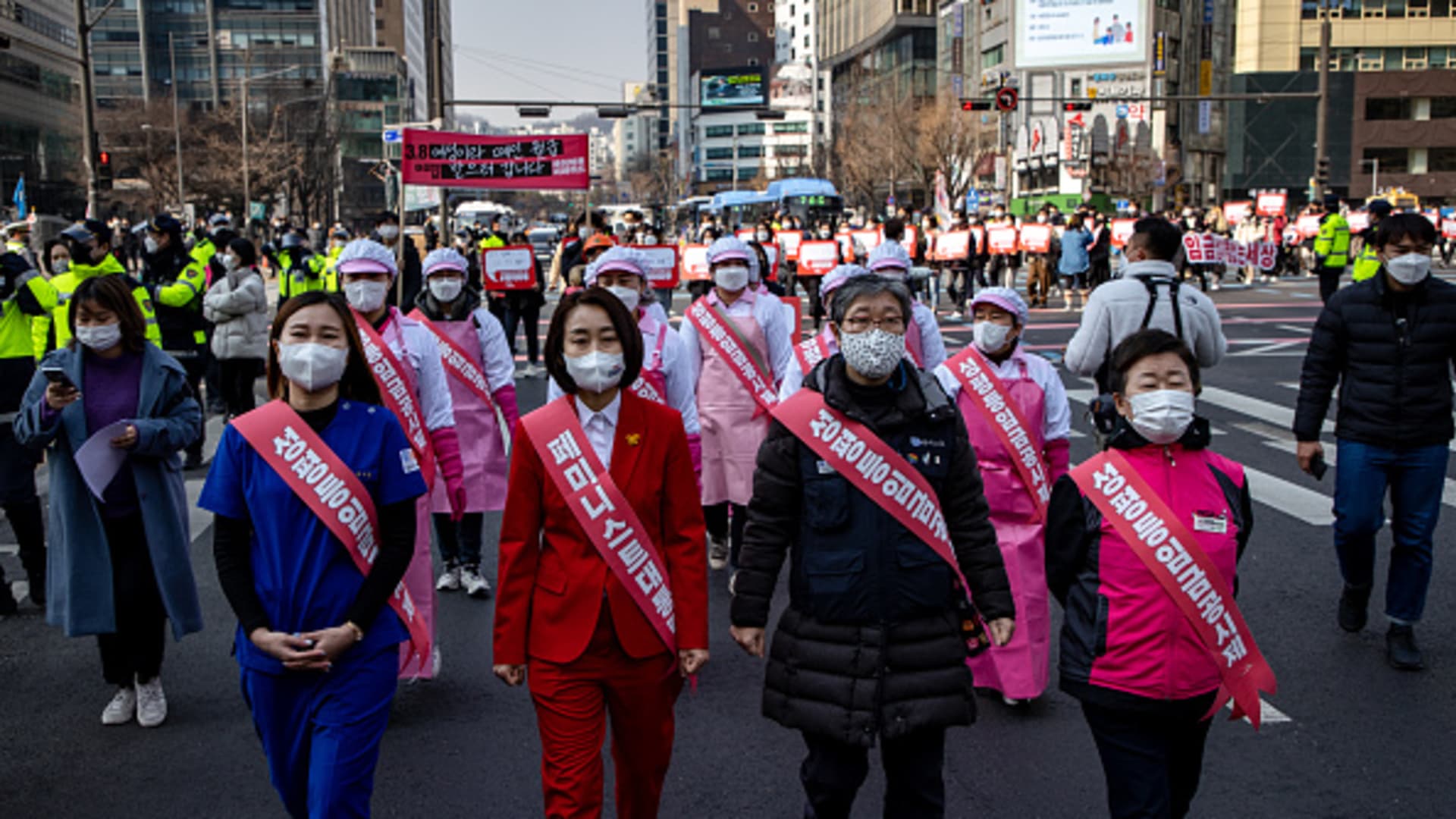
Civil society organizations marked International Women’s Day on March 8, 2022 in Seoul, South Korea.
Nurphoto | Nurphoto | Getty Images
Asia is falling far behind its regional peers in terms of female boardroom representation, analysis from MSCI and BofA Securities showed.
An average of 20% of Asia’s boardrooms are made up of women, according to research by BofA Securities – that’s merely a 7% improvement from 12 years ago. Female boardroom representation remains a key metric to track the global progress on gender equality.
“Despite impressive growth in reporting and transparency over the last decade, companies in Asia Pac have a long way to go,” a group of analysts and strategists at BofA said in a report.
The bank said more and more companies in the region are disclosing gender data. However, the gap in wage, employment, and boardroom representation between men and women remains large.
“As more companies have disclosed the gender composition of their management teams, the overall proportion of women in management has not changed markedly,” the analysts, including Matty Zhao, wrote.
“The proportion of companies reporting employee diversity is 67% but only 35% of those employees are females,” they said.
Most Asian markets have historically struggled to attract and retain women in private sector employment, especially in executive and director role.
In its latest report on “Women on Boards,” index-provider MSCI noted that while Asia has seen progress in transparency, it has a record of falling behind regional peers.
“Most Asian markets have historically struggled to attract and retain women in private sector employment, especially in executive and director role,” analysts including Carrie Wang and Tanya Matanda wrote in the report.
According to MSCI, the percentage of total director seats held by women in South Korea was at 12.8% in 2022. In Japan, 15.5% of its executive and director roles were women – both fell far behind the MSCI World average of 31.3%.
In South Korea, a private survey showed just 10% of its largest public companies had female directors – and a majority of them were outside directors, which are members of the company’s board but not an employee or a stakeholder.
South Korea’s latest available government data, which was released in 2021, showed only 5.2% of corporate boardrooms were female.
Behind in policy
The Asia Pacific region still falls behind its global peers, Chitra Hepburn, MSCI’s head of Asia-Pacific ESG & Climate, told CNBC’s Squawk Box Asia on Wednesday.
“APAC was a little later in adopting some of these principles — DEI principles as well as some of the human capital development principles,” she said, referring to diversity, equity, and inclusion. “I think we’re seeing a lag in the progress that’s been made in APAC versus what we see in Europe.”

After setting mandatory diversity quotas, Japan and South Korea have seen “some of the steepest declines” in the percentage of companies with all-male boards, MSCI said in its report.
According to MSCI, the number of all-male boards in Japan halved from 15% in 2021 to 7% in 2022.
Similarly, 21% of South Korean companies lacked female representation in 2022 compared to 42% in 2021, they said.
MSCI said it may take another 15 years, or until 2038, for women to reach equal representation in boardrooms.
“Using an average of the four-year trend from 2018 to 2022 as the baseline, we project that the 30% and 50% marks could be reached by 2026 and 2038, respectively,” MSCI said.
“What’s interesting is perhaps not at the board level, but certainly the number of female CEOs we have – in that board league table, 9 countries out of APAC have made it into the top 20 for CFOs, and 7 for CEOs,” said Hepburn.
“It’s telling that we’re seeing an increase in very senior management leadership roles [for women] in APAC,” she said.


